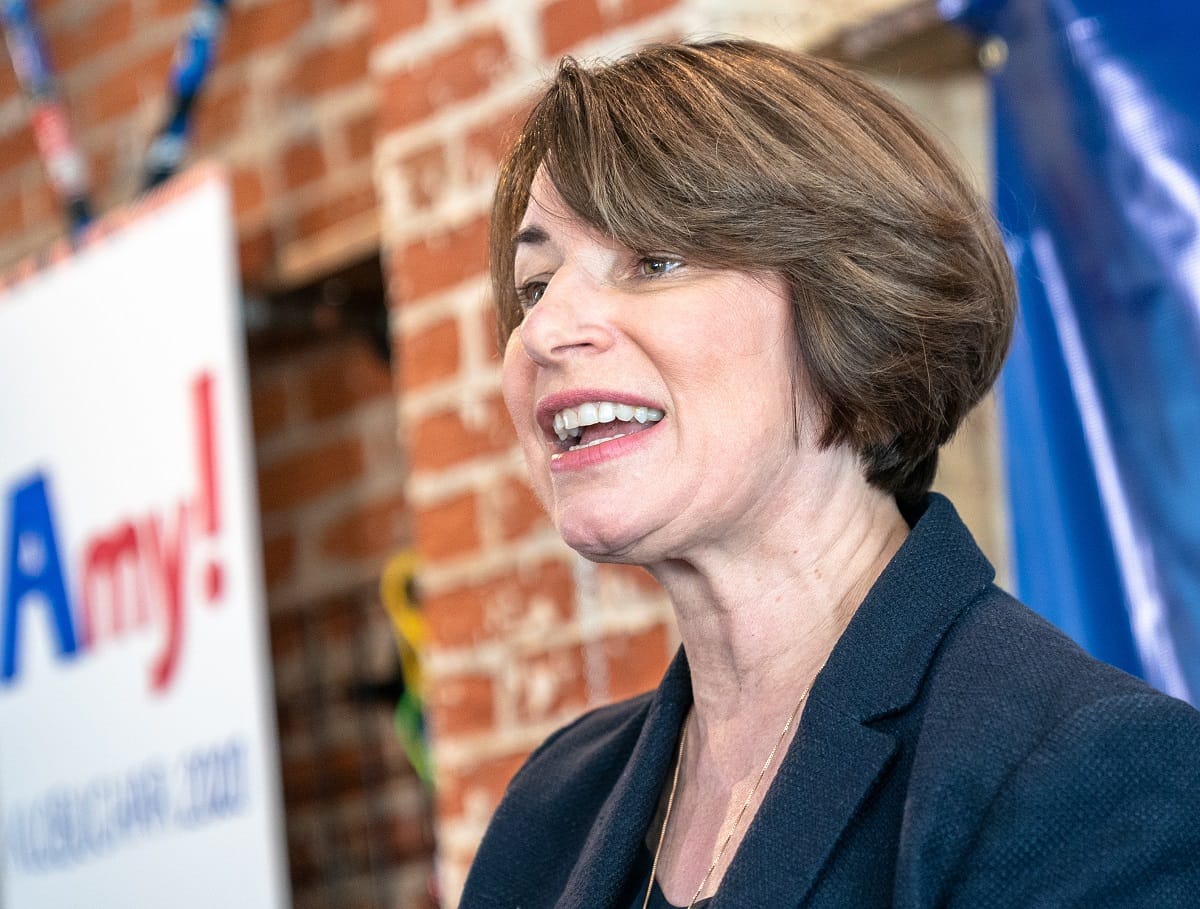Building a Bridge over the Digital Divide: Explaining the Affordable, Accessible Internet for All Act
December 11, 2020 – Last week we began our broad overview of the Accessible, Affordable Internet for All Act, sweeping legislation that calls for a $100 billion investment in broadband infrastructure in unserved and underserved parts of the country, as well as federal funding and coordinated support
Sean Gonsalves

December 11, 2020 – Last week we began our broad overview of the Accessible, Affordable Internet for All Act, sweeping legislation that calls for a $100 billion investment in broadband infrastructure in unserved and underserved parts of the country, as well as federal funding and coordinated support to meet the myriad of barriers that prevent tens of millions of Americans from having access to affordable and reliable Internet connectivity.

The bill (H.R. 7302) has already passed in the U.S. House of Representatives led by House Majority Whip James E. Clyburn (D-SC) and members of the House Rural Broadband Task Force. The Senate version of the bill (S. 4131), which was filed by Minnesota Senator Amy Klobuchar, co-chair of the Senate Broadband Caucus, has stalled, thanks to Senate Majority Leader Mitch McConnell who has “has buried the legislation in his graveyard,” in the words of Rep. Clyburn.
In this second-installment of a series of posts exploring the major sections contained in the proposed legislation, we look at the “Title I – Digital Equity” portion of the bill.
New Office of Internet Connectivity and Growth (OICG)
The first thing the legislation does is requires the Assistant Secretary of Commerce for Communications and Information to establish an Office of Internet Connectivity and Growth (OICG) within the National Telecommunications and Information Administration (NTIA).
The new office, which would be allocated a $26 million annual budget, would run point on federal outreach to communities who lack access, or need better broadband access, via regional workshops, trainings, and the drafting of reports that would provide guidance on best-practices.
The office would also be required to track federal spending on any broadband related expenditures, as well as coordinate with other federal agencies to conduct a study on how affordability factors into households’ lack of connectivity and what might be done to make broadband more affordable.
Another important duty of the OICG is a requirement to coordinate with other federal agencies to streamline the application process for assistance for federal programs that support broadband deployment and adoption.
Digital Equity Grant Programs
Where the legislation starts to get interesting is in the subsection on the State Digital Equity Capacity Grant Program, in which the bill calls for the allocation of $60 million for grants to help states develop a “Digital Equity Plan” and $625 million in grants to help states implement those plans, with no less than five percent of the grant funds to be set aside specifically for Indian tribes, Alaska Native entities, and Native Hawaiian organizations.
This grant program represents something new and important because federal funds for broadband are typically funneled to Internet Service Providers (ISPs) or network owners, not so much for planning.
Another new grant program the legislation would establish is the Digital Equity Competitive Grant Program, which would appropriate an additional $625 million to award grants to local entities, tribal governments, Alaska Native entities, Native Hawaiian organizations, non-profits, anchor institutions, educational entities, and workforce development programs for “digital inclusion activities,” which the legislation defines as initiatives that provide for reliable broadband service; Internet-enabled devices; digital literacy training; technical support; and promotion of online privacy and cybersecurity.
One small but important detail in the Digital Equity Competitive Grant Program portion of the bill is that these particular funds are not subsidies to make Internet access more affordable – they are for activities to improve digital inclusion, such as raising awareness of subsidies already available to those unable to afford broadband service, including subsidies available through the Federal Communications Commission (FCC) administered Lifeline program.
For those counting at home, the legislation calls for $625 million to go to states and another $625 million to go directly to those entities doing digital inclusion activities.
The last part of Digital Equity Programs section requires the Assistant Secretary of Commerce for Communications and Information to report to Congress annually on these grants and assess how each grant had been implemented.
Bridging the Affordability Gap
The next section of the legislation – Broadband Service for Low-Income Consumers – looks to provide relief for households who cannot afford to pay for broadband services, which has become especially acute during the pandemic. The federal government does not bother to track the cost of broadband service, despite that recommendation in its own 2010 National Broadband Plan [PDF] (see recommendation 4.2 on page 43), but U.S. prices for Internet access generally reflect a failed market.
A $9 billion appropriation to be administered by the FCC establishes a “Broadband Connectivity Fund” for qualified households to receive up to a $50 monthly benefit, or $75 per month on tribal lands, that would go towards the monthly price of Internet service. Eligibility would be determined based on whether a member of the household qualifies for Lifeline, is enrolled in a free/reduced school lunch program, or has been recently unemployed.
Internet Service Providers (ISPs) would be required to offer eligible households broadband service at a reduced price equal to the benefit and then be reimbursed by the FCC. In addition to the monthly benefit for service, the legislation also includes reimbursements of up to $100 for ISPs to provide a device per eligible household.

In the following subsection, the legislation looks to remedy the botched FCC roll out of the National Lifeline Eligibility Verifier with a $200 million grant program to help states participate. What started in 1985 as a way for the FCC to provide discounted local phone service to low-income consumers was expanded in 2016 to include broadband services.
As the Benton Institute for Broadband & Society notes:
“the National Lifeline Eligibility Verifier is intended to allow a Lifeline provider to quickly determine a person’s eligibility by searching the databases of the government assistance programs. But in a rush to say that the verifier had launched (FCC Chairman Ajit) Pai forced states to connect to the system before they were ready. As a result, a majority of states still have not connected their databases for the Supplemental Nutrition Assistance Program (SNAP), Supplemental Security Income (SSI), and other qualified government assistance programs to the verifier. This means that qualified Lifeline recipients are being mistakenly rejected from Lifeline. Given that more than 33 percent of Lifeline recipients qualify under the SNAP program, it follows that large numbers of eligible Americans are being denied benefits.”
To really bring the point home, the legislation specifically requires the FCC to coordinate with the U.S. Department of Agriculture to set up automated connections between the National Lifeline Eligibility Verifier and the National Accuracy Clearinghouse for the Supplemental Nutrition Assistance Program (SNAP).
Connecting Students and Urban Healthcare Providers
The following subsection — E-Rate Support for Wi-Fi Hotspots, Other Equipment, and Connected Devices — is aimed specifically at schools. It appropriates $5 billion for a “Connectivity Fund” that would provide support for schools and libraries (including Tribal schools and libraries) to purchase equipment such as Wi-Fi hotspots, modems, routers and other connected devices, as well as funding for advanced telecommunications and information services.
The existing E-rate program, which was established to help schools and libraries access affordable broadband service, is limited to on-campus spending. The additional funds would expand the E-Rate program to help fund broadband connectivity off-campus, as advocated for by SHLB and resisted by the Trump Administration.
The legislation does not overlook addressing the connectivity challenges for disadvantaged students in higher education. In the subsection Supporting Connectivity for Higher Education Students in Need, the bill appropriates $1 billion for an “Emergency Higher Education Connectivity Fund” that would help pay for Internet service and equipment such as laptops and modems for students at historically Black universities, Hispanic-serving institutions of higher learning, tribal colleges, and rural-serving institutions.
The last subsection of the Digital Equity portion of the bill focuses on healthcare broadband expansion. Currently, the Healthcare Connect Fund (HCF) Program provides a 65% discount on eligible broadband connectivity expenses for eligible rural health care providers (HCPs). This part of the legislation proposes expansion to establish a $2 billion “Telehealth Connectivity Fund” to include urban healthcare providers in the Healthcare Connect Fund.
Stay tuned for the next installment of this series, on transparency.
Editor’s Note: This piece was authored by Sean Gonsalves, a senior reporter, editor and researcher for the Institute for Local Self Reliance’s Community Broadband Network Initiative. Originally published on MuniNetworks.org, the piece is part of a collaborative reporting effort between Broadband Breakfast and the Community Broadband Networks program at ILSR.










Member discussion